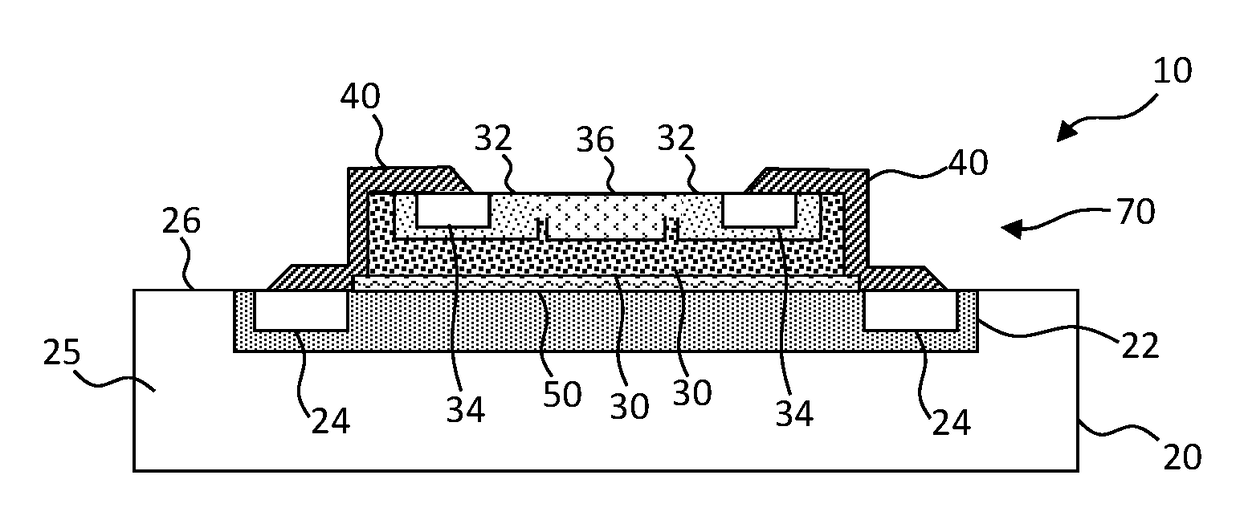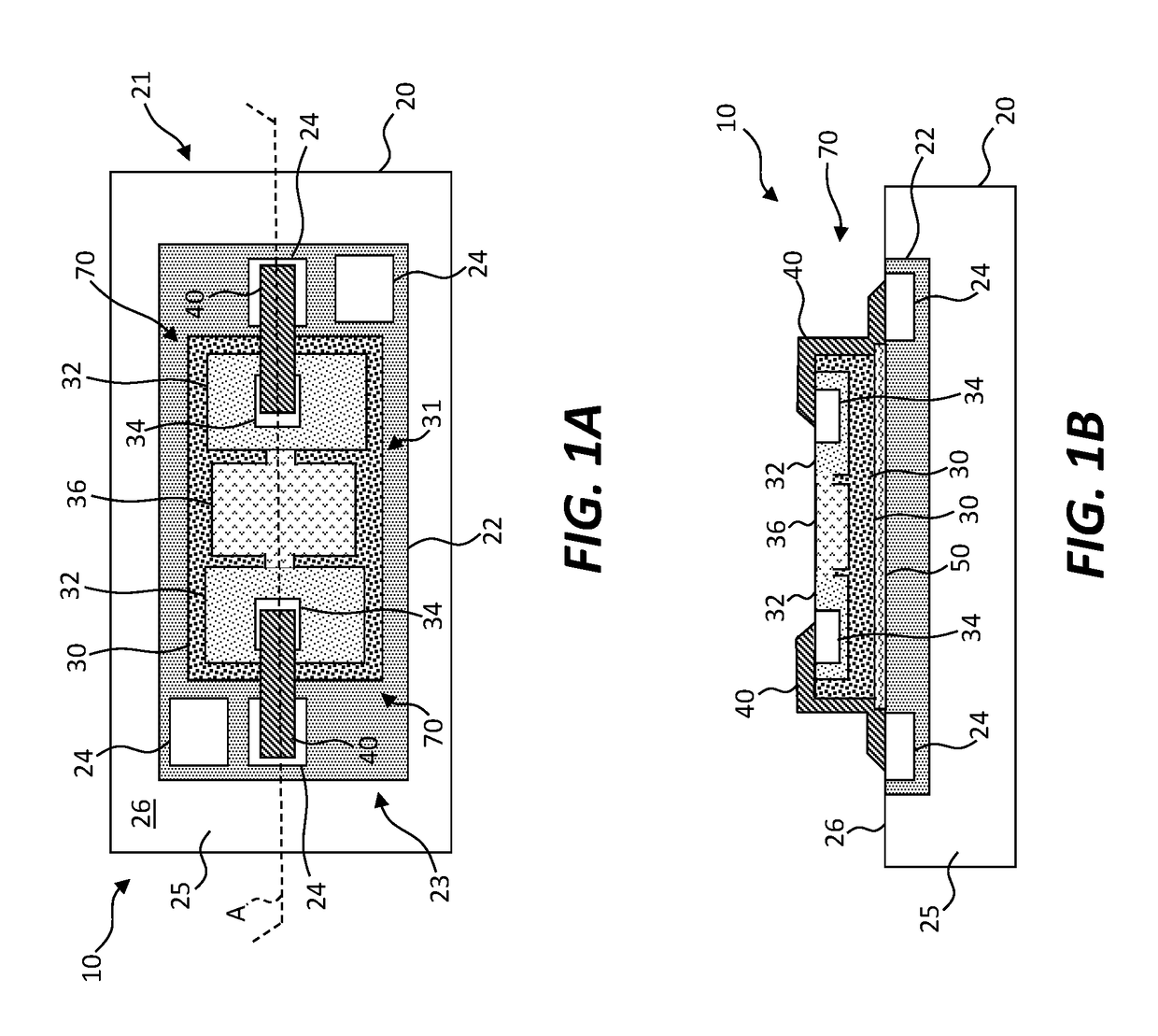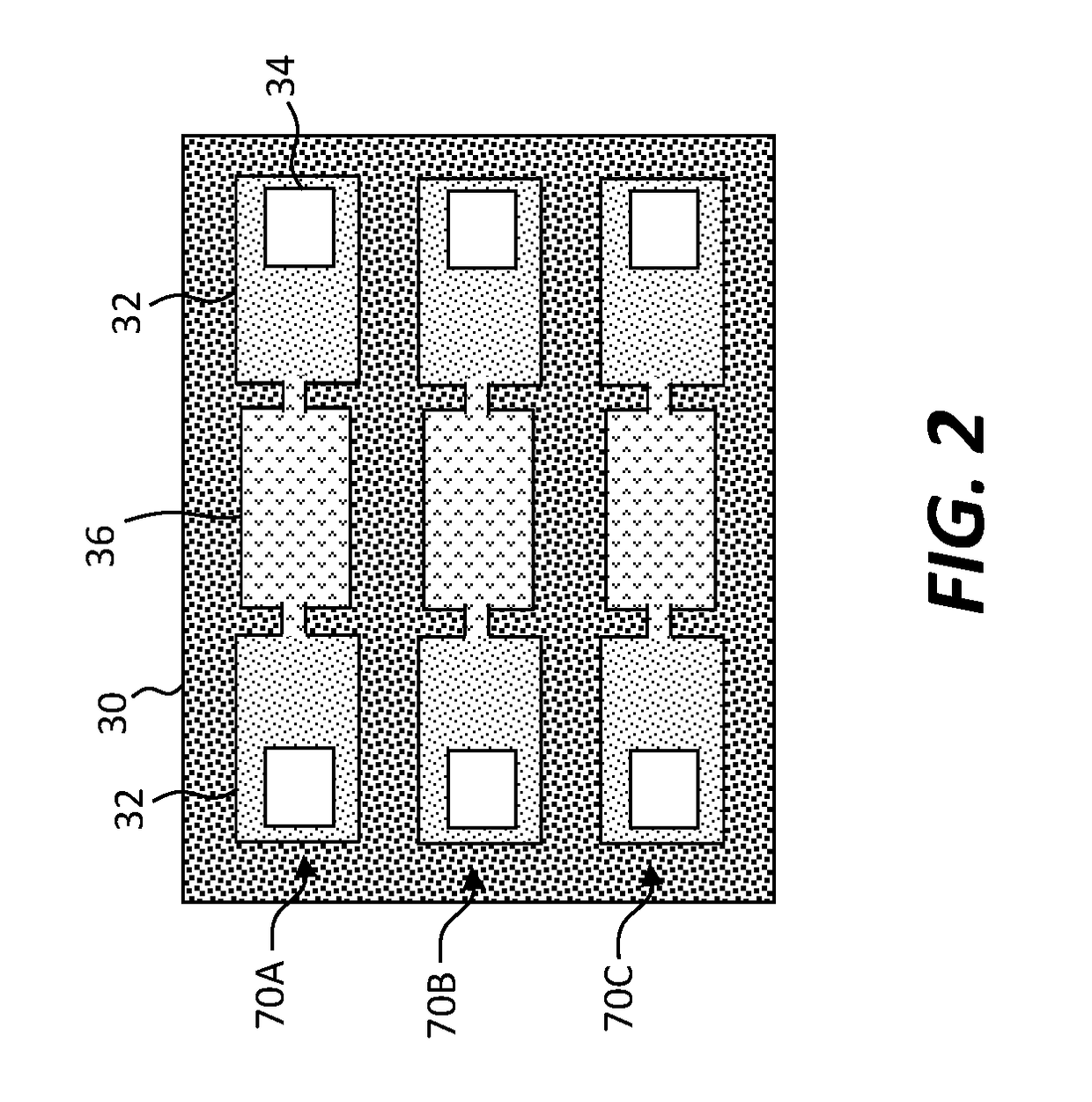Micro-transfer-printed compound sensor device
a sensor device and microtransfer technology, applied in microstructural technology, microstructure technology, precision positioning equipment, etc., can solve the problems of less efficiency, not more efficiently integrating processing and sensing devices, and not well suited
- Summary
- Abstract
- Description
- Claims
- Application Information
AI Technical Summary
Benefits of technology
Problems solved by technology
Method used
Image
Examples
Embodiment Construction
[0069]Referring to the schematic plan view of FIG. 1A and the schematic cross section of FIG. 1B taken across cross section line A of FIG. 1A, in an embodiment of the present invention, a compound sensor device 10 includes a semiconductor substrate 20. An active electronic circuit 22 is formed in or on the semiconductor substrate 20, for example, using photolithographic methods found in the integrated circuit industry. The active electronic circuit 22 can be, for example, a circuit for controlling a sensor 70, sending or receiving signals to or from the sensor 70, or processing signals received from the sensor 70. The active electronic circuit 22 can also send and receive signals to and from an external device (not shown). The active electronic circuit 22 includes two or more circuit connection pads 24 connected to the active electronic circuit 22 for providing signals to the active electronic circuit 22 or receiving signals from the active electronic circuit 22. The sensor 70 is re...
PUM
| Property | Measurement | Unit |
|---|---|---|
| length | aaaaa | aaaaa |
| length | aaaaa | aaaaa |
| length | aaaaa | aaaaa |
Abstract
Description
Claims
Application Information
 Login to View More
Login to View More - R&D
- Intellectual Property
- Life Sciences
- Materials
- Tech Scout
- Unparalleled Data Quality
- Higher Quality Content
- 60% Fewer Hallucinations
Browse by: Latest US Patents, China's latest patents, Technical Efficacy Thesaurus, Application Domain, Technology Topic, Popular Technical Reports.
© 2025 PatSnap. All rights reserved.Legal|Privacy policy|Modern Slavery Act Transparency Statement|Sitemap|About US| Contact US: help@patsnap.com



